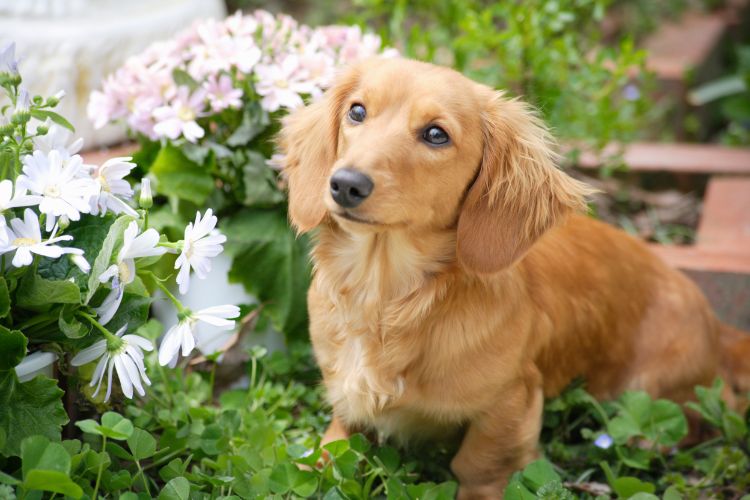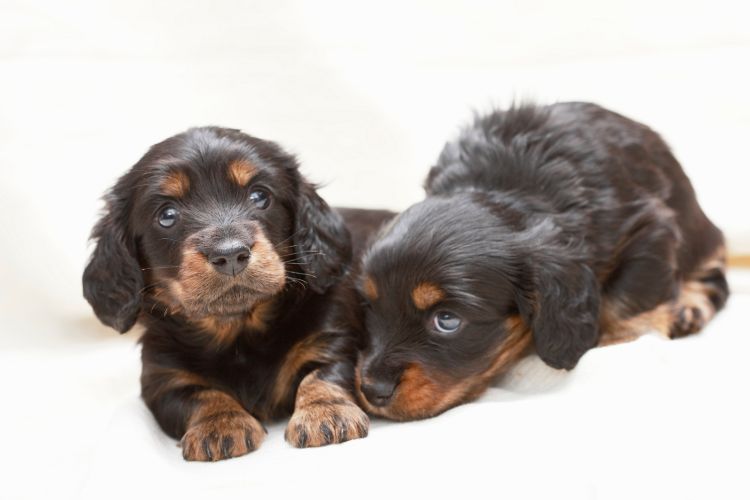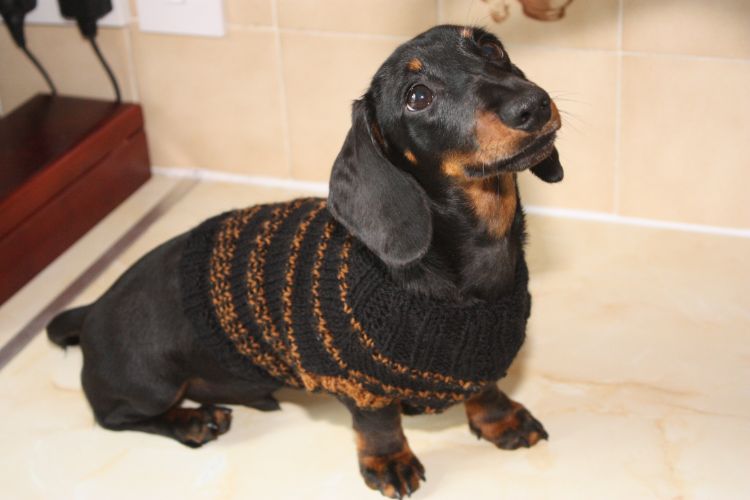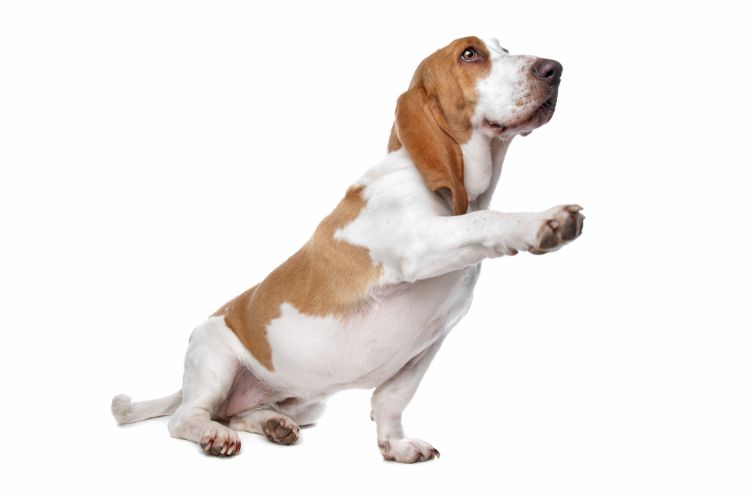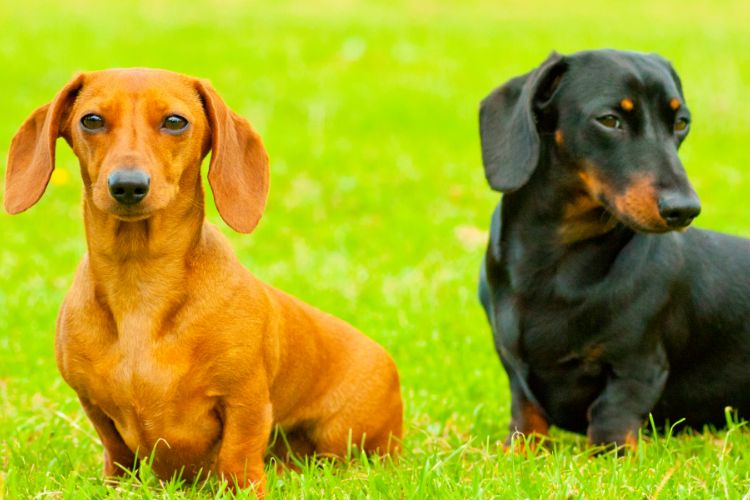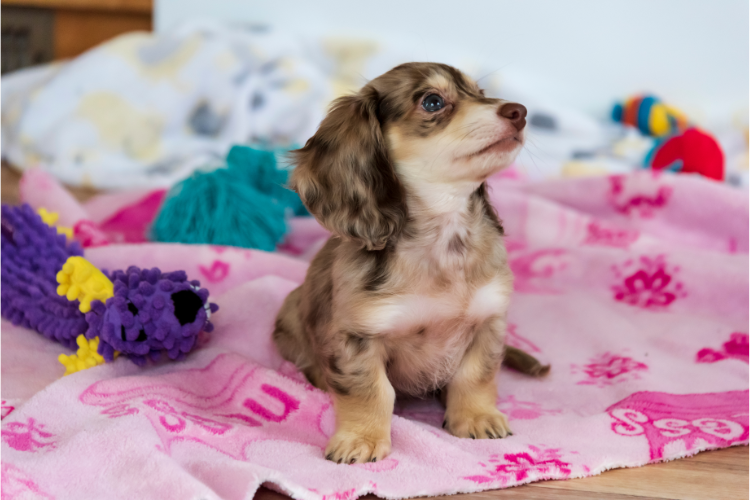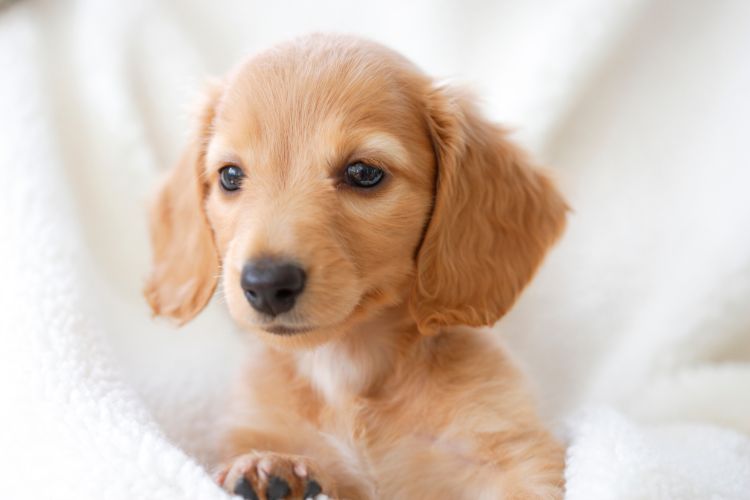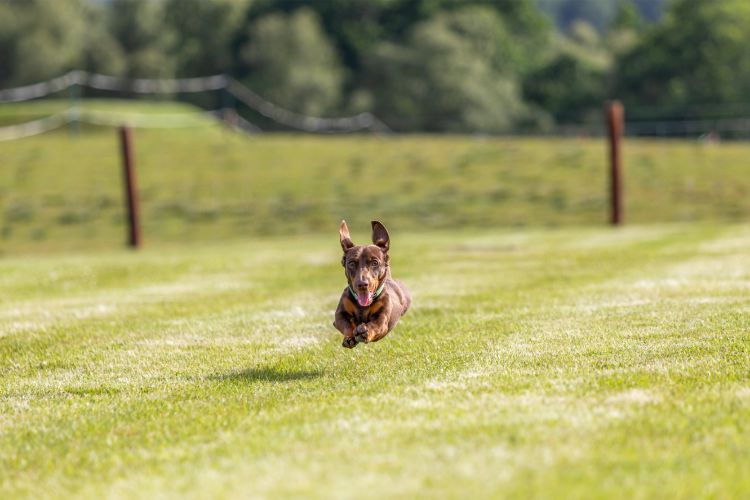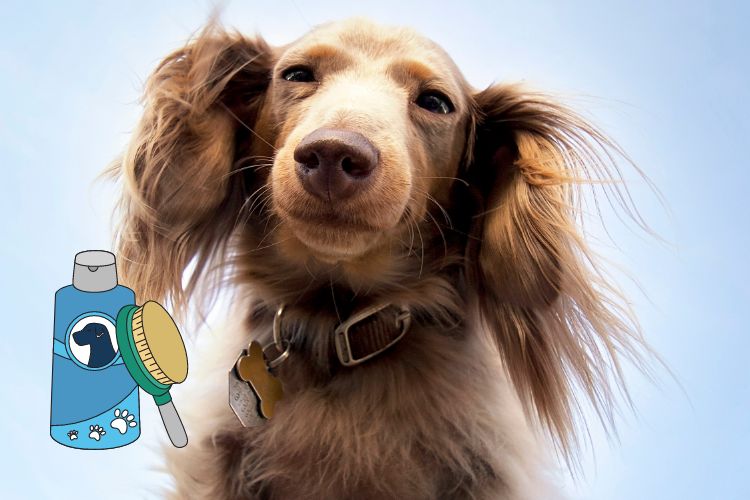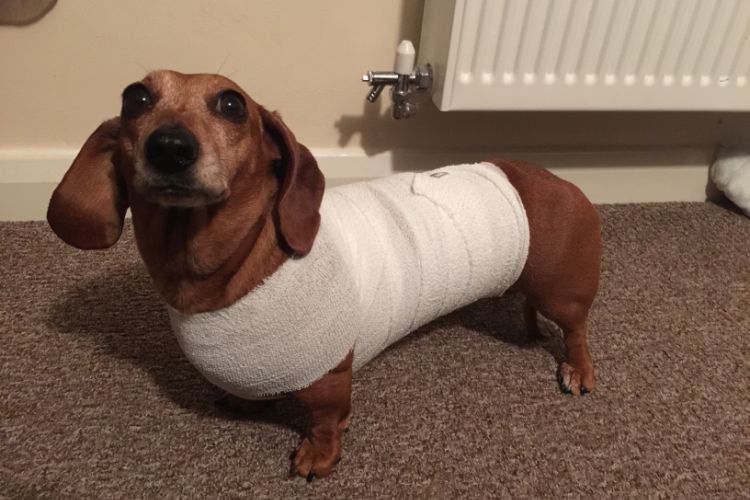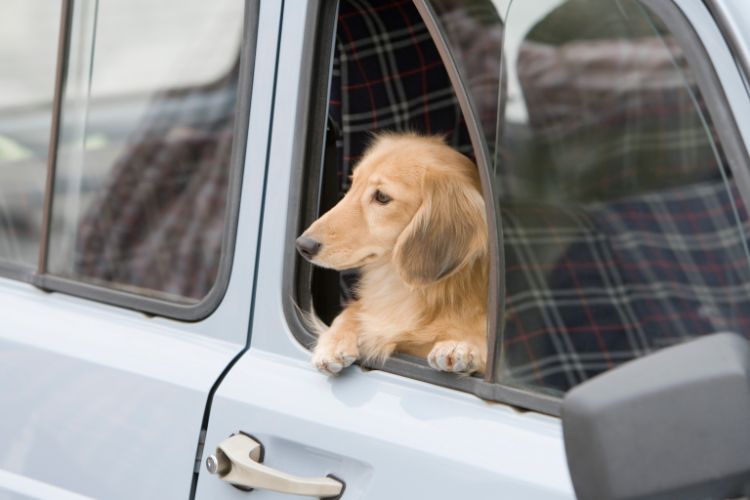Mini Dachshunds are quirky, cute, lively, and affectionate. This breed enjoys hunting and playing just as much as cuddling up to you while you enjoy a good book. These small dogs, affectionately known as ” wiener dogs,” are more than just an adorable appearance.
They pack a personality as unique as their low, long bodies, and because they’re so small, you can take them everywhere with you. This is perfect for students with busy schedules because you can really take the pup with you even to college (if it doesn’t contradict the rules of the educational institution). However, in any case, I know that can be done without leaving home, allowing you to pay more attention to your pet.
Miniature Dachshunds steal the show with their undeniable charm and unique personalities. These pint-sized pups have captured the hearts of dog lovers worldwide, and for good reason.
This blog post will discuss miniature Dachshunds, how to care for them, and why they make excellent pets.
Here’s the takeaway:
Breed Overview
- Group: Hound
- Weight: 11 pounds or less
- Height: 5 to 6 inches
- Coat: Smooth, wirehaired, or longhaired
- Coat Color: Various, including black and cream, black and tan, blue and tan, chocolate and tan, cream, red, wheaten, wild boar, blue and cream, fawn and tan, fawn and cream, or chocolate and cream with/without brindle, sable, piebald, or dapple markings
- Life Span: 12 to 16 years
- Temperament: Affectionate, friendly, alert, quirky, intelligent, fun, smart
- Hypoallergenic: No
- Origin: Germany
Characteristics of the Miniature Dachshund
Miniature Dachshunds are renowned for their friendly and upbeat temperament. Despite their small size, they exude playfulness and only need moderate exercise. However, it’s worth noting that these adorable dogs can display a touch of stubbornness, which can pose challenges during training.
Here’s a breakdown of their key characteristics:
- Affection Level: High
- Friendliness: High
- Kid-Friendly: Medium
- Pet-Friendly: Medium
- Exercise Needs: Medium
- Playfulness: High
- Energy Level: Medium
- Trainability: Medium
- Intelligence: Medium
- Tendency to Bark: High
- Amount of Shedding: Medium
The Miniature Dachshund: History
The word Dachshund comes from a German word meaning ” badger dog.” This breed was bred to hunt, and their low-long bodies are perfect for burrowing into badger dens. Dachshunds are known for their bravery but can also be very stubborn.
Their loud bark kept their human companions informed as they ventured underground. Remarkably, these traits still endure in today’s Miniature Dachshunds.
As time passed, breeders continued to refine the Dachshund breed, creating different sizes tailored to hunt various game types. The end of the 1800s saw the development of multiple coat types and colors. In 1885, the American Kennel Club (AKC) officially recognized the Dachshund breed, cementing its place in the dog world.
Hound Group
The Doxie belongs to the AKC/UKC Hound Group and can be either standard-sized (16-32 pounds) or miniature-sized. ( 11 pounds and under)Dachshunds can also have one of three coat types: smooth, wirehaired, or longhaired.
The standard and miniature Dachshunds are not built for strenuous exercise, long runs, or vigorous swimming but do well with laid-back walks and plenty of playtime. The Daschund has a lifespan of 12- 16 years and needs to be fed a high-quality diet with lots of fresh ingredients to prevent obesity and avoid back injury.
The American Kennel Club (AKC)
Miniature Dachshunds may be small in stature, but they possess larger-than-life personalities. The mini Doxie’s playful nature, loyalty, and affectionate demeanor make them ideal for individuals or families looking for a small breed that’s easy to train and that gets on well with other pets and people.
“The Dachshund is clever, lively, and courageous to the point of rashness, persevering in above- and below-ground work, with all the senses well-developed. Any display of shyness is a severe fault,” says the AKC. Despite their small size, these little dogs have a big heart and an even more significant presence.
Coats
The Dachshund has three coat types: smooth, wirehaired, and longhaired. The coat is soft and short, long and wiry with bristly facial hair, or long and silky with feathers. Coat colors may vary red or cream, blue, fawn, chocolate, or black, with tan points.
You can also find salt and pepper-colored miniature Dachshunds called wild boar with patterns like dapple, piebald, and brindle.
English Cream Doxies
If you’re unsure whether to purchase an English cream or shaded English cream, an English cream Doxie will not have any shading or black in his coat, whereas the shaded Doxie will retain some of the black, most likely on ears and tail.
The English Cream Doxie comes about due to inheriting a gene from both parents and the chinchilla gene. A shaded cream Doxie is born dark in color and will begin losing some of the coat darkness at around eight weeks.
Endless Cuteness
With their long bodies, short legs, and expressive eyes, miniature Dachshunds are undeniably adorable. Whether sporting a sleek coat of dapple, red, black, or chocolate, their unique and eye-catching appearance turns heads wherever they go.
Prepare for endless compliments and squeals of delight from passersby when out and about with your new miniature Dachshund puppy.
Adaptable
Miniature Dachshunds adapt well to various living situations, making them versatile companions. These adaptable dogs can thrive in any environment, whether you reside in a spacious house or a cozy apartment. Their moderate exercise makes them suitable for active individuals and those who prefer a more relaxed lifestyle.
Positive Training
Don’t let their cute personalities fool you – miniature Dachshunds are highly intelligent and trainable. Known for their independent thinking, they excel in obedience training and enjoy learning new tricks. With consistency, positive reinforcement, and patience, you’ll be amazed at how quickly this breed grasps commands and training tricks.
Caring for Your Miniature Dachshund
To ensure your miniature Dachshund remains healthy and happy, it’s important to prioritize their care. Here are a few essential tips:
Balanced Diet
Maintaining a balanced diet and regular exercise will keep your miniature Dachshund in great shape. This breed tends to gain weight quickly, so portion control and nutritious meals are important throughout your dog’s life. Your miniature Dachshund should always have fresh water available.
Reach out to your veterinarian if you need clarification on how much to feed your miniature Dachshund so that he does not gain weight. Fresh diets like The Farmers Dog feature fresh whole veggies and meat and, while being high in protein, are easily digestible. The takeaway with The Farmers Dog is that you get a specialized food plan for every life phase.
Exercise
Daily walks, playtime, and mental stimulation activities will help keep them physically and mentally stimulated. While Miniature Dachshunds don’t demand excessive exercise, they require regular mental stimulation and physical activity to stay happy and healthy.
Keeping your Miniature Dachshund on a leash or in a securely fenced area outdoors is critical, as their high prey drive can lead them to chase small animals. Additionally, be vigilant, as they may attempt to dig or burrow under fences. Preventing jumping on and off furniture and excessive stair climbing is crucial to safeguard their backs.
Grooming
Grooming requirements for Miniature Dachshunds vary depending on their coat type:
- Smooth-Coated: Brushing once a week to remove loose fur is usually sufficient.
- Longhaired: These Dachshunds should be brushed a few times weekly to prevent tangles and mats.
- Wirehaired: This variety benefits from coat stripping several times a year and weekly brushing. Trimming the beard and eyebrows can help maintain a neat appearance.
Regular baths, nail trims, ear checks for wax buildup, and daily teeth brushing should also be part of your grooming routine.
Regular Veterinary Check-Ups
Routine veterinary check-ups are vital for your miniature Dachshund’s well-being. Regular vaccinations, dental care, and preventive measures against common health issues such as obesity and back problems, which are prevalent in the breed, will ensure a long and happy life for your Doxie.
It’s critical to remember that spinal issues can be expected in Miniature Dachshunds if you’re not careful with your Dachshund when playing or exercising because of their elongated spine.
Common Health Problems
When correctly cared for, Miniature Dachshunds can enjoy long, healthy lives.
However, they are susceptible to some hereditary health issues, including:
- Disc Damage and Back Problems: Due to their elongated spine, Miniature Dachshunds are prone to conditions like intervertebral disc disease (IVDD), which can lead to spine damage or paralysis.
- Ear Infections: Their ears are prone to moisture retention and poor airflow, making them susceptible to ear infections.
- Obesity: Dachshunds can become obese, putting excessive strain on their backs. Maintaining a healthy weight is crucial.
Socialization and Mental Stimulation
Miniature Dachshunds thrive on social interaction and mental stimulation. Regularly expose your pup to new environments, experiences, and other friendly dogs to foster their sociability. Engage in interactive play sessions, provide puzzle toys, and consider enrolling in puppy training classes to keep their minds sharp and engaged.
Where to Adopt or Buy a Miniature Dachshund
Miniature Dachshunds can sometimes be found in animal shelters, so consider checking local shelters or Dachshund rescue groups. If you prefer to purchase a Miniature Dachshund from a pet store, expect to pay around $1,500 to $3500, although prices vary depending on the state and breeder.
Final Thoughts
In summary, miniature Dachshunds possess a unique blend of charm, intelligence, and affection, making them incredible companions. Their compact size, adorable appearance, and adaptability to various living situations make them ideal for individuals or families looking for a small dog breed.
FAQs Miniature Dachshund
Q: What are Miniature Dachshunds known for?
A: Miniature Dachshunds, also called Wiener dogs, are known for being the perfect companion dog. They adapt to many living situations and do well in city and rural life. They also make for one of the best apartment dogs. This darling breed has a wedge-shaped head, long drop ears, and a deep chest and comes in standard and miniature sizes.
Q: How big do Miniature Dachshunds get?
A: A fully grown Miniature Dachshund typically reaches 5-6 inches in height and up to 11 pounds. This is the ideal breed to travel with and enjoy on pet vacations. However, you do need to prevent your Doxie from jumping off couches or going downstairs to protect his spine.
Q: Are Miniature Dachshunds good apartment dogs?
A: Miniature Dachshunds can adapt well to apartment living thanks to their small size. They are also a low-shedding breed but tend to bark at strangers. Yet, with proper socialization and training, you can train your Dachshund not to bark at everyone.
Miniature Dachshund: One Of The Smallest Dog Breeds In The World
Video credit: Pet Videos

